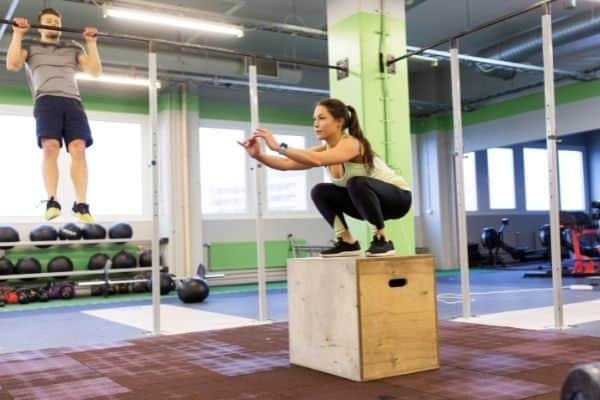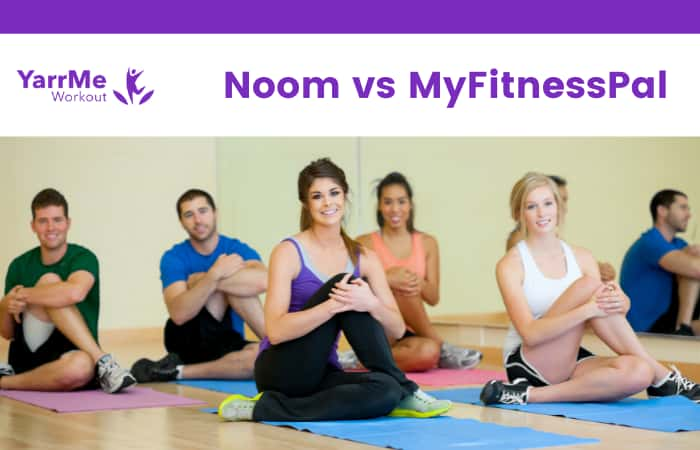Yes, Plyometric does work! Plyometric is a great way to improve your explosive power. It can help you become faster, stronger, and more agile. Plyometric exercises involve jumping, hopping, and sprinting. They are designed to increase the speed and force of your muscle contractions.
Explore Benefits of Plyometrics…
- Become Taller with Plyometrics – No, you are not going to grow any taller by doing exercises that target your muscles. But , it can assist, checkout how?
- Build Muscles with Plyometrics – Checkout article for plyometrics exercises and benefits of it for building muscles.
- Plyometrics for Long Distance Runners – Plyometric exercises are designed to increase speed, but not for runners who are looking to add distance to their runs. Check it for more information.
- Increase Speed With Plyometrics – Plyometrics is used to improve the speed and agility of an individual. Check out the actual processes and exercises that benefit you greatly.
How Plyometrics Benefits you?
Let’s see some ways plyometric does work:
— Tremendous power
Plyometric training is also an effective way to increase your power by putting a greater strain on the muscles. This makes plyometrics great for sports where speed and power are important factors.
— Improved Agility
The improved agility you will experience as a result of plyometric training can help you stay one step ahead of your opponents. By being able to change directions quickly, you will be able to evade tackles or make that last-second shot.

— Increased Speed
In addition to becoming stronger and more agile, you will also become faster. This is because plyometric training increases your ability to produce force quickly. This force is what enables you to run and jump faster.
Common Plyometrics Exercises
Lets see some effective plyometric exercises:
1) Tuck Jumps:
Tuck jumps are great for working on your explosive power and vertical jump. To perform a tuck jump, stand with your feet shoulder-width apart and bend down to touch the ground between your legs. Jump up as high as you can while bringing your knees towards your chest. Don’t worry about jumping far. The main idea is to jump as high as you can.
2) Box Jumps:
Doing box jumps will help you increase your explosive power and vertical jump. To do a box jump, find a sturdy box or platform that’s about knee height. Stand in front of the platform, facing it. Bend down and place your hands on the ground. Jump up onto the platform, landing softly on both feet. If you don’t feel comfortable (or safe) jumping that high, then start with a lower box height.
3) Box Push-ups:
Box push- ups are great for working your chest muscles and explosive power. To perform this exercise, find a sturdy box or platform that’s about waist height. Place your hands on the box, with your body in a push-up position. Bend your elbows and lower your body towards the box. Push yourself back up to the start position.
4) Standing Broad Jumps:
Broad jumps are a great way to improve your explosive power and speed. To perform a standing broad jump, stand with your feet shoulder-width apart. Swing your arms backward and bend the knees slightly. Then quickly swing your arms forward as you push off using both legs to propel yourself as far as you can.. Make sure that both feet leave the ground at the same time and land softly on both feet.
5) Box Jumps with a Twist:
This is a more advanced version of the box jump. To do this exercise, find a sturdy box or platform that’s about knee height. Stand in front of the platform, facing it. Bend down and place your hands on the ground. Jump up onto the platform, landing softly on both feet. As you jump up, twist your body to the left, jumping off of one foot. Repeat in alternating directions.
6) Squat Jumps:
Squat jumps are great for working on explosive power and leg strength. Start by standing with your feet shoulder width apart. Lower yourself into a squat position, making sure that your knees don’t go past your toes. Pause at the bottom for a second and then jump up as high as you can. Land softly, absorbing the force of your landing. Make sure to keep your knees behind your toes when squatting down and jumping back up.

7) Butt Kicks:
Doing butt kicks will help you improve your speed and endurance. To do a butt kick, start by standing with your feet shoulder width apart. Kick your heels towards your glutes. Keep your abdominal muscles pulled in so that you move straight upwards. Repeat as fast as you can.
8) Frog Jumps:
Frog jumps are a great way to improve your speed, agility, and vertical jump. To do a frog jump, start in a push-up position with your arms shoulder-width apart. Jump up, bring your feet towards your hands, and land softly on the ground. Keep jumping as quickly as possible.
Reasons Plyometrics Don’t Work
Lets see some reasons plyometrics don’t work:
— You’re not doing them correctly:
If you’re not doing plyometric exercises correctly, you’re not going to see any results. Plyometrics require explosive power and if you’re not performing the exercises with enough intensity, you won’t see any improvements.
— You’re not giving yourself enough time to recover:
Plyometric exercises are very intense and require a lot of energy. If you’re not giving yourself enough time to recover between workouts, you won’t see any improvements.
— You’re not focusing on the proper form:
If you’re not focusing on proper form, you’re not going to see any results. Plyometrics require explosive movements and if your form is off, you won’t get the full benefit of each exercise.
Browse More on Plyometrics…
- Does Plyometrics Work? – No. Plyometrics are intense exercises that are there to produce power, and we shared some of the reasons why it’s not recommended as a daily workout.
- Is it okay to do Plyometrics Everyday? – No. Plyometrics are intense exercises that are there to produce power, and we shared some of the reasons why it’s not recommended as a daily workout.
- Plyometrics and Cardio are Same? – Yes! Plyometrics can be a form of cardio. They can be considered cardio if done at high intensity. To know more, checkout article.
- Plyometrics makes you bulky!!! – Plyometric training alone won’t assist you to gain muscles. We think it’s the opposite. Check out the article to find out why!!!
- Injuries with Plyometrics – It is possible but rare. These workouts are meant to be done by people who are either fit and healthy. Find out more in article.
— You’re not staying hydrated:
Plyometrics require a lot of energy and you need to stay hydrated to provide your body with enough fuel for workouts. If you don’t drink enough water, your muscles will fatigue faster and you won’t see any results.
— You’re not eating enough protein:
To see improvements in your explosive power, you need to eat enough protein. Protein is essential for building muscle and without it, you won’t see any major improvements in your performance.
— You’re overtraining:
Plyometric exercises are high intensity and if you’re not giving your body enough time to rest, you won’t see any results. You need at least one day of rest between workouts for your muscles to recover.
— You’re not challenging yourself enough:
If you’re not challenging yourself enough with plyometric exercises, you won’t see any results. Try to increase the number of reps you do each time or try doing plyometric exercises at a higher intensity next time.
Is it safe to do plyometrics if I’m pregnant?
Most people choose to modify their exercise routine when they’re pregnant, but if you’re going to do plyometrics while you’re pregnant, make sure your form is perfect and that you don’t overdo it. Relief from boredom and exhaustion is a good reason to bother with modifying an otherwise non-intense workout for a woman late in the third trimester. Your body needs less oxygen so your heart rate will be lower, which can have benefits during labor.
Can you lose weight with plyometric?
You can lose weight with plyometrics if your diet and workouts are aligned. Self-discipline and consistency will be key to success. You can increase lean muscle mass by making sure resistance training is also a part of your routine, so you’ll burn more calories while building muscle.
Conclusion:
Plyometric exercises are high intensity and if you’re not giving your body enough time to rest, you won’t see any results. You need at least one day of rest between workouts for your muscles to recover. Make sure that when you go into a plyometric workout, you have the mindset of challenging yourself with new reps or an increased intensity level.
If all else fails, talk to our team about how we might be able to help guide your marketing strategy by considering cognitive neuroscience principles like Prospect Theory in future campaigns so that customers find it more compelling than ever before!






